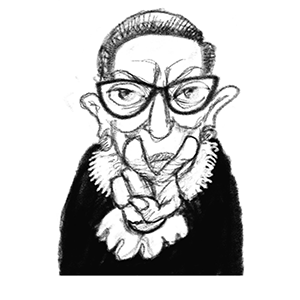Raising the retirement age won’t defuse China’s demographic time bomb – but mass immigration might
Published in Political News
Chinese workers may soon have to work just a little bit longer.
In late July 2024, China’s ruling Communist Party adopted a resolution that would see the country’s statutory retirement age gradually rise over the next five years.
The final retirement age has not been specified, but an earlier official report suggests it is likely to end up at around 65 years old.
This would put the country more in line with other large economies, including the U.S. At present, China has one of the lowest retirement ages in the world, at 60 for men, and 55 for women in white-collar jobs or 50 if they are in blue-collar jobs.
Party leaders have mulled reforming China’s retirement plan for several years. But the apparent urgency now reflects growing concern over the impact that a shrinking – and aging – population will have on the country’s dwindling pension pot.
Funds set aside to cover retirement costs in China look set to be completely used up by 2035, the Chinese Academy of Social Sciences projected just a few years ago.
Raising the retirement age will no doubt stretch funds for a few extra years.
But it will not be a permanent fix – and it does nothing to address the serious underlying demographic problems that China faces.
I have studied China’s population for over 40 years; I believe the demographic issue confronting China now represents one of the most serious problems facing the country in centuries.
With a fertility rate of 1.1 children per woman – way below the 2.1 births per woman needed to maintain a native population – and more deaths each year than births, China’s future is one of declining population, with an enormous increase in the numbers of elderly. Compounding the problem, China has long been hostile to the idea of supplementing its native population through immigration; just 0.1% of its population is foreign-born – that’s the smallest percentage of any major country in the world.
For most of its life span, Communist China has seen population growth.
In 1950, several months after the founding of the People’s Republic of China, the country’s population numbered 539 million. It then rose every year for nearly 70 years, reaching 1.43 billion in 2021.
But at that point it peaked. In the subsequent years, China has had more deaths than births and has lost population. Furthermore, United Nations population projections, suggest that if current trends continue China’s population will fall below 1 billion in 2070, below 800 million in 2086 and down to 633 million by 2100.
That represents a loss of more than half its current population in around 75 years. A population decline that drastic would wreak havoc on its labor force, causing untold economic problems.
But it isn’t simply about the drop in total number. Potentially more concerning is the shift in how the population is made up.
According to U.N. figures, in 2023 just under 20% of China’s population was in the current retirement bracket of 60 and over. But by 2100, this is projected to increase to an astounding high of over 52%.
The data also shows that at present, around 12% of China’s population are young workers, aged 20 to 29, while 46% are older employees aged 30 to 59. But by 2100, this labor force is projected to drop dramatically to just over 7% for young workers and around 29% for 30- to 59-year-olds.
Similarly, the numbers of children and young adults in China, those aged 19 and under, will drop from 21% in 2023 to 11% in 2100.
In short, the population projections for China do not bode well for the future of the country. There will be fewer workers to support a growing number of, mainly elderly, dependents.
But China’s plan to increase the retirement age will have only a minor impact on alleviating the problems associated with these trends. Raising the retirement age will not help China slow the population decline, and it will have only a marginal effect on the ratio between working adults and post-working age adults.
There is, however, something that can mitigate this trend: immigration.
Many of the major countries of the world with very low fertility rates rely on international migration to provide young workers – and these young immigrants also have more babies than the local people. Compare, for instance, China’s low rate of 0.1% foreign-born with the almost 14% foreign-born in the U.S. and 18% in Germany. Even the East Asian nations of Japan and South Korea have higher foreign-born percentages than China, at 2% and 3.7%, respectively.
Several attempts have been made by the Chinese government to implement policies to increase the birth rate, but they have not worked. In fact, demographers tend to agree that such “pronatalist” policies tend not to be effective.
But it will not be easy to introduce and implement an active immigration policy in China, a country with little experience with immigration and a seemingly deep-rooted belief in racial purity shared by many leaders in the Communist Party.
There may well be resistance to immigration from the wider Chinese population. Young Chinese workers would be the ones most affected by an increase of immigrants. In the early years of any policy that encourages mass immigration, some Chinese would lose their jobs and need to find employment elsewhere. This would especially be the situation for young workers.
But in general, immigrants seek employment in jobs that the local population does not prefer – sometimes referred to as “three Ds jobs,” or those that are dirty, dangerous and demeaning. This has been the case in most European countries and in the U.S.
And the alternative will be more painful for China in the long run. If an active immigration policy is not implemented, by the beginning of the next century, China will be half as large as it is today and will be one of the oldest countries – if not the oldest country – in the world.
Beijing is already facing the strain of these trends, hence the need for pension reforms. But without the influx of a young immigrant workforce, the problems China faces will be far worse.
This article is republished from The Conversation, a nonprofit, independent news organization bringing you facts and analysis to help you make sense of our complex world.
Read more:
South Korea’s gender imbalance is bad news for men − outnumbering women, many face bleak marriage prospects
The problem with pronatalism: Pushing baby booms to boost economic growth amounts to a Ponzi scheme
Dudley L. Poston Jr. does not work for, consult, own shares in or receive funding from any company or organization that would benefit from this article, and has disclosed no relevant affiliations beyond their academic appointment.























































Comments